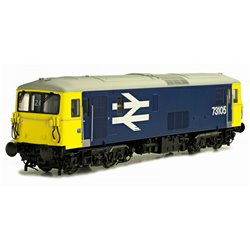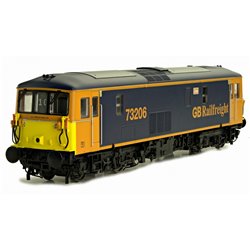The Timesaver shunting puzzle is a classic model railway switching (shunting) game designed by John Allen in the...
No products
Product successfully added to your shopping cart
There are 0 items in your cart. There is 1 item in your cart.
Search Tips
What are Class 73 engines?
The Class 73 locomotive is fascinating. These electro-diesel engines, first introduced by British Rail in the 1960s, are known for their dual power capability. They can operate on third-rail electric power or switch to their onboard diesel engines, which made them highly versatile, especially in the Southern Region where electrified and non-electrified lines are common. If you're building a layout that includes mixed operations, a Class 73 could be a great addition.
When it comes to appearance, the Class 73 has a distinctive, boxy design typical of British locomotives from that period. At just over 52 feet in length, it's compact enough to fit comfortably on most layouts, even if space is limited. The unique shape, with its front nose and side vents, makes for a satisfying modelling project. If you enjoy adding detail, you'll appreciate the handrails, working lights, and cab interiors that come with many of the OO and N gauge models available today.
What really makes the Class 73 stand out in a model railway is the variety of liveries it's worn over the years. From the original British Rail green to the blue and later schemes like InterCity and Network Southeast, these locomotives have seen it all. No matter what era or operator you're focusing on, there’s probably a Class 73 that fits. This gives you a lot of flexibility to create a scene that feels authentic, whether you’re modelling the 1960s or something more modern.
One of the most exciting aspects of the Class 73 for modellers is how you can reflect its dual power setup on your layout. You could simulate it switching between electrified and non-electrified tracks, adding a dynamic element to your operations. It's a great locomotive for hauling both passenger and freight services, giving you even more options for how you use it. This versatility makes it a key part of any layout where you want to mix things up and keep the operations interesting.
If you're into sound-equipped models, many modern versions of the Class 73 come with realistic sound decoders. Imagine hearing the electric motor's hum or the diesel engine's growl as it runs across your layout – it really adds a new level of immersion. Combine that with working lighting, and you've got a model that not only looks fantastic but sounds and feels real, too.
Overall, if you're looking for a model that's both versatile and historically significant, the Class 73 is an excellent choice. Whether you're recreating the Southern Region in its heyday or focusing on more modern scenes, this loco brings a unique operational variety and visual interest to your layout.
Click here to receive the tips weekly in your mailbox. You can unsubscribe at any time.









